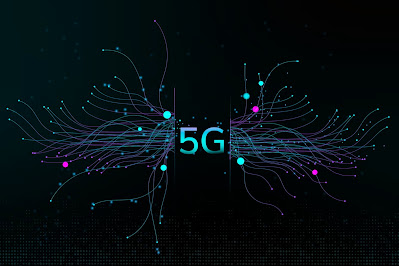5G technology refers to the fifth-generation wireless technology that offers faster internet speeds, higher bandwidth, and low latency compared to the previous generations. The technology uses higher frequency bands, advanced modulation techniques, and sophisticated antenna systems to provide a more reliable and efficient communication network. In this article, we will explore the benefits of 5G technology in detail.
Benefits of 5G Technology
Faster Internet Speeds:
The primary advantage of 5G technology is its faster internet speeds. It offers download speeds of up to 20 Gbps, which is nearly 100 times faster than 4G technology. This means that users can download movies, games, and other large files in just a few seconds. This faster internet speed also makes streaming high-quality videos and conducting video conferences easier and more seamless.
Higher Bandwidth:
5G technology offers much higher bandwidth than 4G technology, which means that it can support a larger number of devices connected to the network at the same time. This is particularly useful in crowded places like airports, stadiums, and public transportation, where many people need to connect to the internet simultaneously.
Low Latency:
Latency is the time it takes for a device to communicate with the network. 5G technology offers an extremely low latency of around 1ms, which is much lower than the 10ms latency offered by 4G technology. This means that the communication between devices and the network is almost instantaneous, making it possible for applications like remote surgery and autonomous vehicles to operate in real time.
Improved Network Reliability:
The 5G technology also improves network reliability, as it uses multiple antennas and frequencies to connect devices to the network. This means that even if one antenna or frequency fails, the device can still be connected to the network through another antenna or frequency. This makes the network more resilient and less prone to failures.
IoT Connectivity:
The Internet of Things (IoT) is a network of connected devices, including smart appliances, wearable technology, and other sensors. 5G technology provides a more reliable and efficient connection for these
devices, allowing them to communicate with each other and the network in real-time. This can lead to more advanced applications such as smart cities, automated factories, and remote patient monitoring.
Enhanced Virtual Reality and Augmented Reality:
Virtual Reality (VR) and Augmented Reality (AR) applications require a high-speed and low-latency network to function effectively. 5G technology offers these features, allowing users to enjoy a more immersive and interactive experience in VR and AR applications. This could be particularly useful in industries like gaming, education, and healthcare.
Increased Business Opportunities:
5G technology opens up new opportunities for businesses, as it allows them to provide faster and more reliable services to their customers. This could lead to the development of new products and services, as well as the creation of new jobs in industries like telecommunications, software development, and data analysis.
Energy Efficiency:
5G technology is also more energy-efficient than previous generations. It uses a technique called network slicing, which allows different parts of the network to be optimized for different use cases, reducing energy consumption. This can lead to lower energy costs and a more sustainable network infrastructure.
In conclusion, 5G technology offers numerous benefits over previous generations of wireless technology, including faster internet speeds, higher bandwidth, low latency, improved network reliability, IoT connectivity, enhanced VR and AR applications, increased business opportunities, and energy efficiency. These features will enable the development of new applications and services that will improve our lives and drive economic growth in the future.












0 Comments